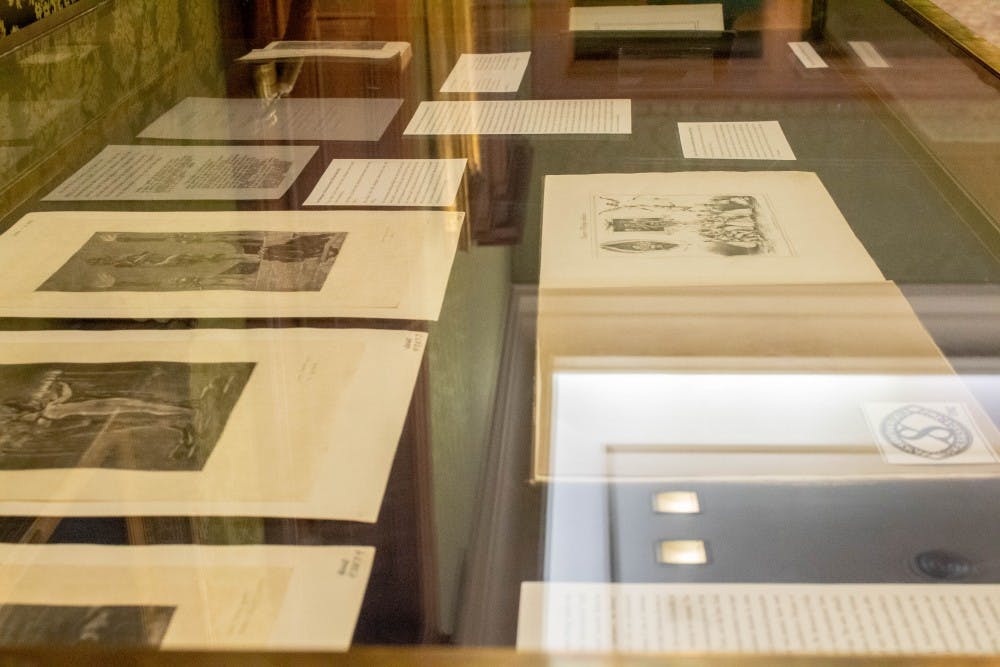Walking into the Lincoln Room in the Lilly Library, one would see glass cases lining the walls. One of the cases, pressed up against the very back wall to the right of the bust of Abraham Lincoln’s head, contains a slip of paper that reads in italics, “All the works exhibited here have been considered offensive by someone.”
The exhibit “Banned Books and Prints in Europe and the United States, 17th – 20th Centuries,” began April 2 and will continue until the end of the month.
Created by associate professor of French Nicolas Valazza, the exhibit displays several English and French works that were subject to censorship.
The topic of many of the pieces are taboo subjects such as sex, sexual orientation and sacrilegious ideals.
Valazza was inspired to create the exhibit after working for the Kinsey Institute, an on-campus research institute studying sex, reproduction and gender. The Kinsey Institute, established in 1947 by pioneering sex researcher Alfred Kinsey, was a nonprofit organization before it bonded with IU in 2016.
“I was working on very rare editions, like books printed in 50 copies, barely-known books that Alfred Kinsey collected in the 1950s,” Valazza said. “Many books that were never included in exhibitions.”
Valazza said he wanted to create an exhibition to not only showcase the materials he found at the Kinsey Institute, but to also explain some of the history of literary censorship in France and the United States involving these materials.
A part of the Kinsey Institute’s history itself involves censorship.
When Kinsey was trying to bring certain openly erotic books, photos and other prints from other countries into the United States, many of the articles were confiscated by U.S. customs. The Kinsey Institute took the case to court and in July 1957, seven years after the case was filed and about one year after Kinsey’s death, the case was settled in favor of the institute.
Excerpts from the case, entitled “United States of America v. 31 Photographs 4-3/4 by 7 Inches in Size and Various Pictures Books and Other Articles,” are included in the exhibit.
Other articles included in the exhibition are the collection of French lyric poetry that was put on trial in France for its erotic poems, “Les Fleurs du Mal” by Charles Baudelaire and what is considered the first English pornographic novel, “Fanny Hill” by John Cleland.
Valazza said he didn’t create the exhibition to convey a specific message. He said that he created the exhibit because he feels that there is much confusion today surrounding the idea of censorship, so he thought providing past examples of censorship would enrich the conversation surrounding this complex issue.
“Often it’s difficult to see the limits of what is offensive, what is not offensive,” Valazza said. “Maybe to see a history, the past or what was considered offensive 100 years ago, can help us to understand.”
The exhibit is free to view 9 a.m. to 6 p.m. Monday - Thursday, 9 a.m. to 5 p.m. Friday and 9 a.m. to 1 p.m. Saturday.




